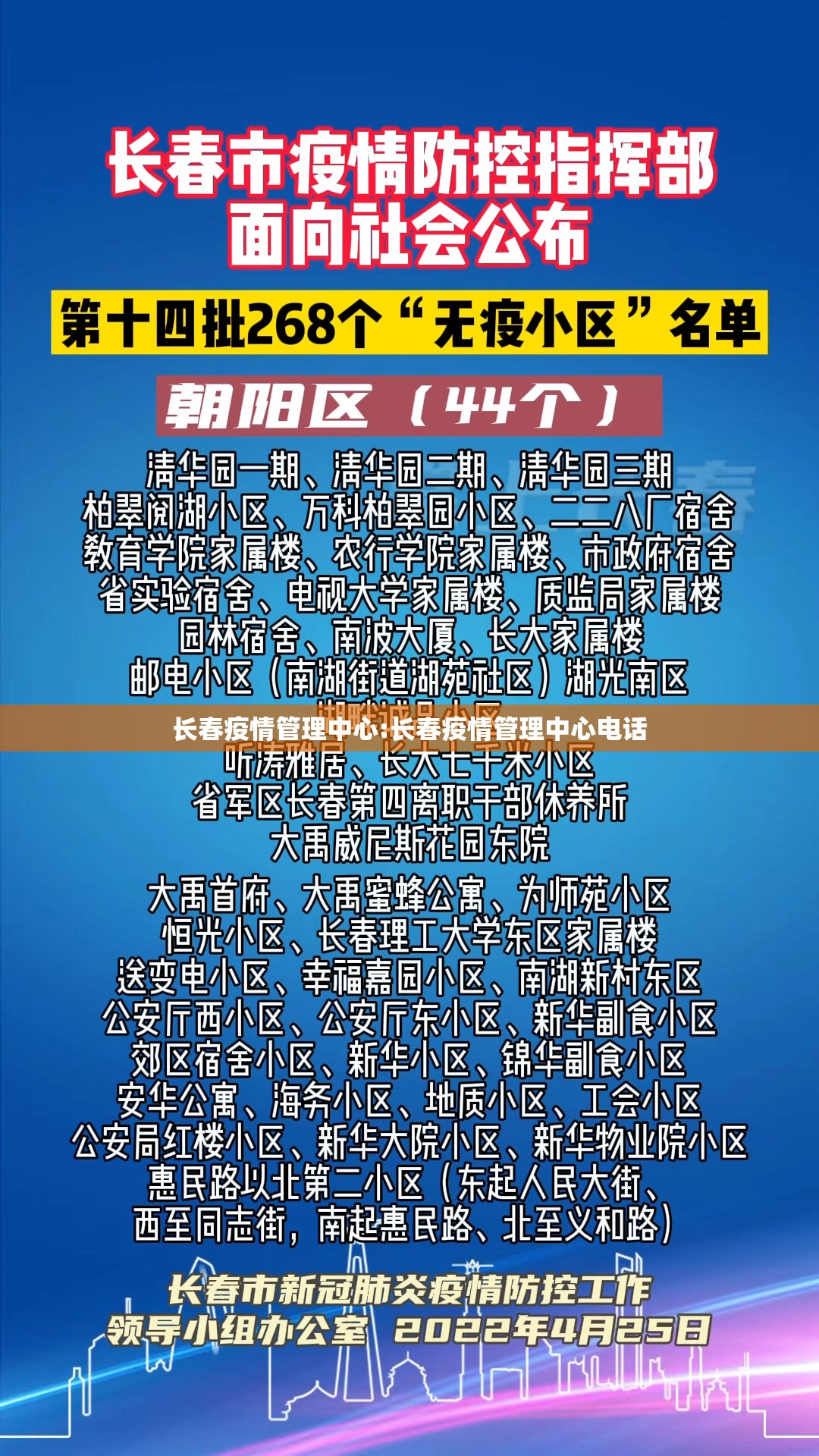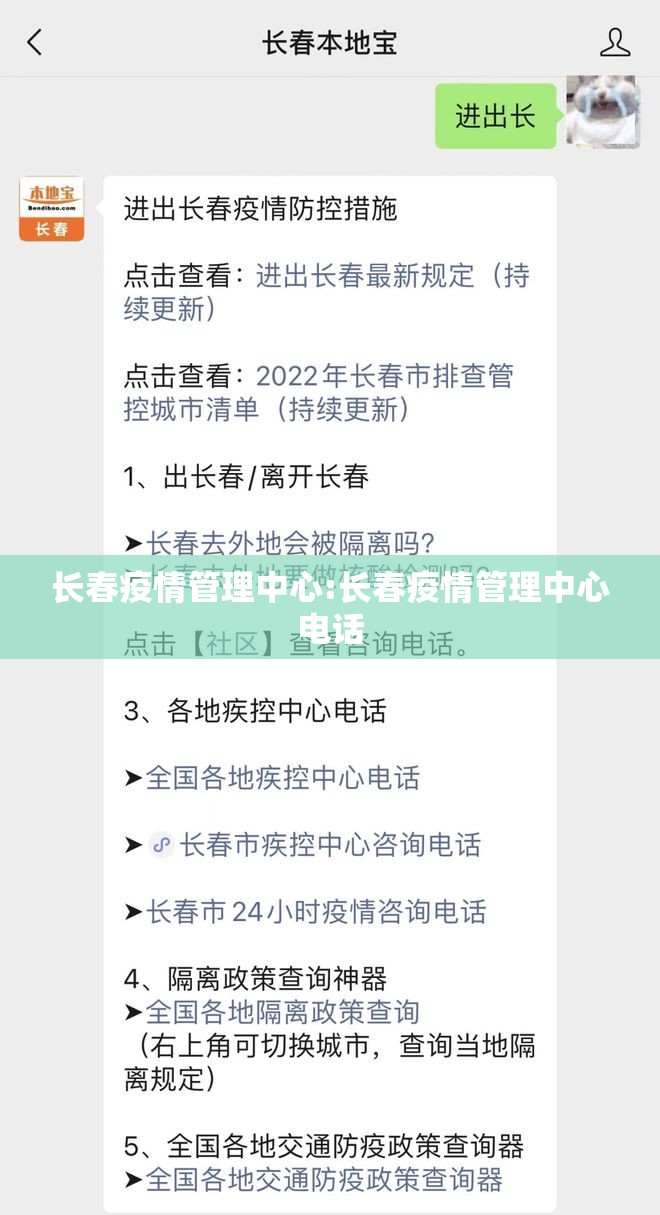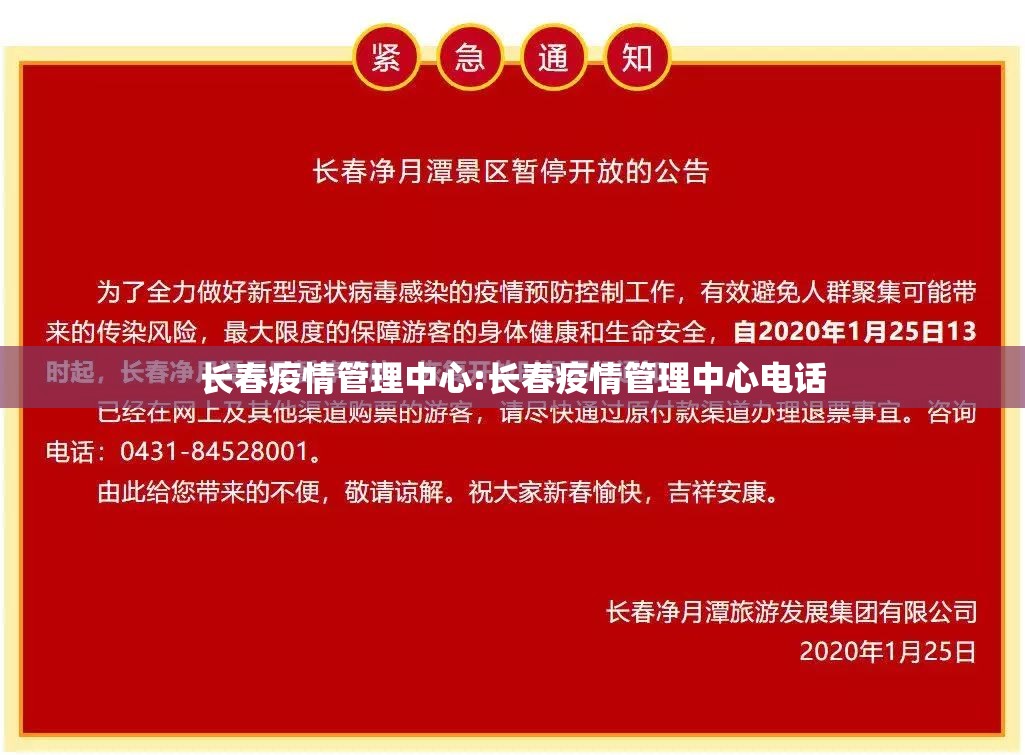在新冠疫情这场全球性挑战中,每个城市都面临着独特的防控考验,长春,作为中国东北的重要工业与文化中心,其疫情应对机制的核心便是“长春疫情管理中心”,这个机构不仅是技术驱动的指挥枢纽,更是连接政府、社区与市民的桥梁,以其高效、科学与人性化的运作,成为城市抗疫的中坚力量,本文将深入探讨该中心的角色、运作机制及其背后的故事,揭示它如何在这场没有硝烟的战争中守护着春城的安宁。
长春疫情管理中心成立于2020年初疫情爆发之初,是长春市政府为统筹全市防疫工作而设立的专门机构,它集数据监控、政策制定、资源调配和公共服务于一体,类似于城市的“抗疫大脑”,中心依托大数据、人工智能和云计算等现代技术,实时追踪疫情动态,分析传播链,并协调卫生、交通、教育等多部门联动,通过整合健康码系统、核酸检测数据和疫苗接种信息,中心能够快速识别风险点,实施精准管控,避免“一刀切”式的封锁,最大限度减少对经济社会的影响,这种科技驱动的模式,不仅提升了防控效率,还体现了长春作为老工业基地在数字化转型中的创新活力。
更重要的是,长春疫情管理中心强调“以人为本”的服务理念,在防控过程中,中心不仅关注数据曲线,更注重市民的实际需求。 during the peak of the Omicron wave in early 2022, the center established a 24-hour hotline and online platforms to address public concerns, from medical access to daily supply chains. Community workers and volunteers were mobilized under the center's guidance to deliver groceries and medicines to vulnerable groups, ensuring that no one was left behind. This human touch transformed the center from a cold, bureaucratic entity into a warm guardian, fostering a sense of solidarity among citizens. Stories of staff working tirelessly through nights or coordinating emergency responses for pregnant women and elderly residents have become local legends, highlighting the center's role in building social resilience.


长春疫情管理中心的运作并非一帆风顺,面对疫情反复和外部压力,如冬季低温带来的物流挑战或市民的防疫疲劳,中心不断 adapt and innovate. It launched public education campaigns to combat misinformation and encourage vaccination, while also refining policies based on feedback. For instance, after evaluating the effectiveness of mass testing, the center shifted to targeted testing in high-risk areas, saving resources and reducing disruption. These adaptations demonstrate a learning organization that values scientific evidence and public participation, making it a model for other cities in crisis management.
Looking ahead, the Changchun Epidemic Management Center is evolving beyond pandemic response. Its infrastructure and expertise are being leveraged to tackle other public health issues, such as seasonal flu prevention or health monitoring for aging populations. This forward-thinking approach ensures that the lessons from COVID-19 will leave a lasting legacy, strengthening the city's overall emergency preparedness and public health system.
In conclusion, the Changchun Epidemic Management Center is more than just a command post; it is a symbol of resilience, innovation, and compassion. By blending technology with humanity, it has not only mitigated the impact of the pandemic but also strengthened the social fabric of the city. As the world continues to navigate uncertainties, centers like this offer valuable insights into how urban communities can thrive in the face of adversity. Changchun's experience reminds us that in the fight against crises, the most powerful weapon is a united, well-organized, and caring society.


 微信扫一扫打赏
微信扫一扫打赏

